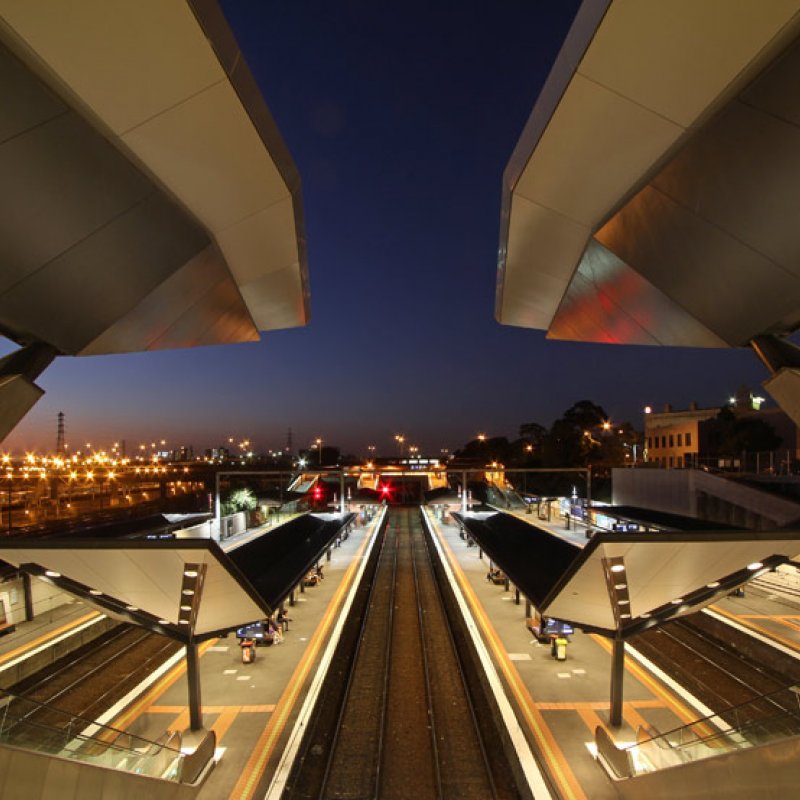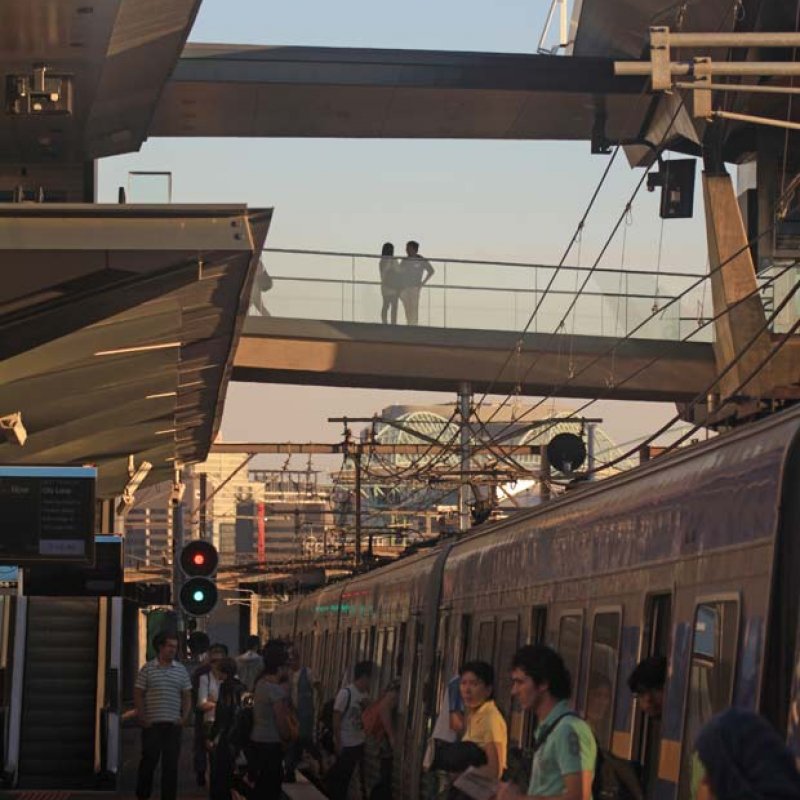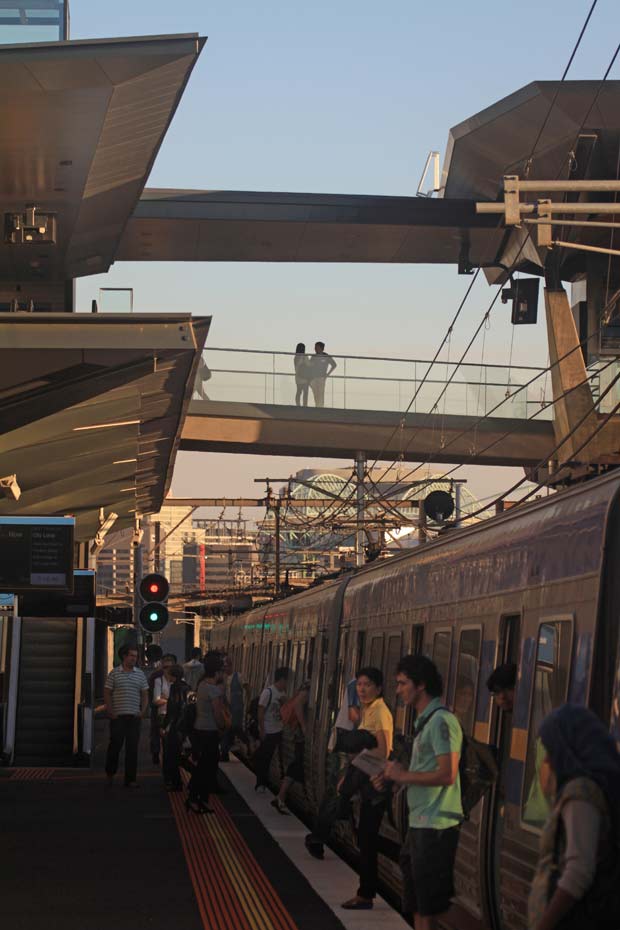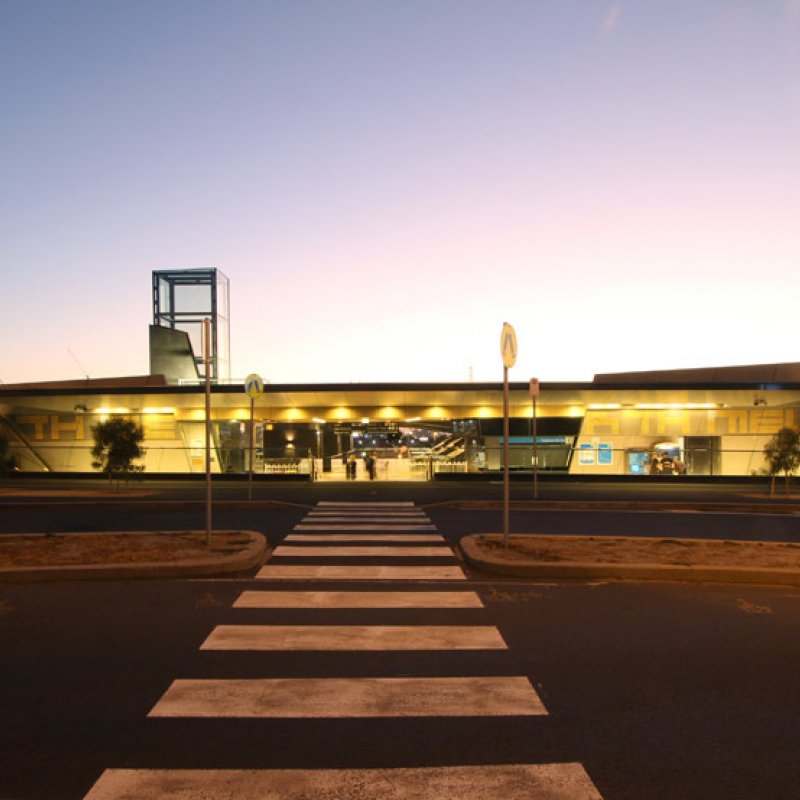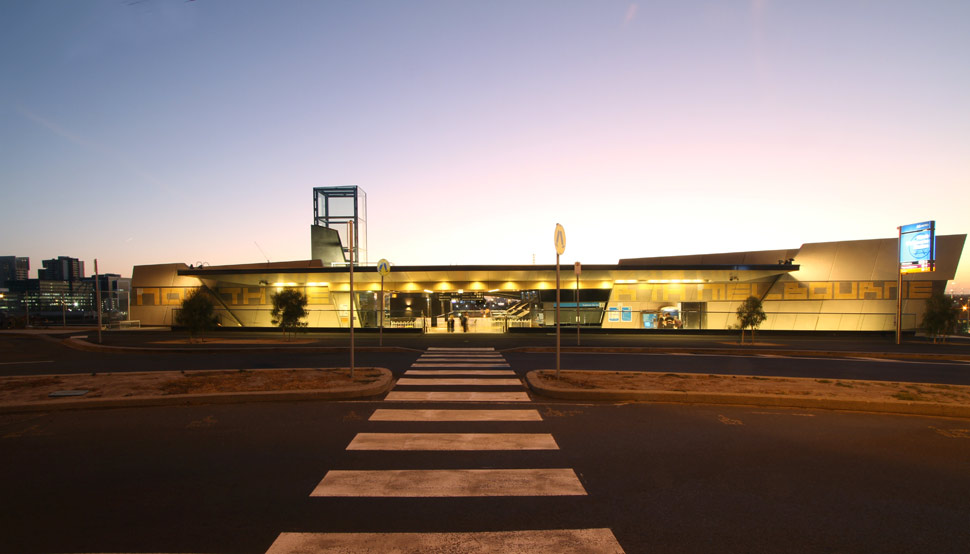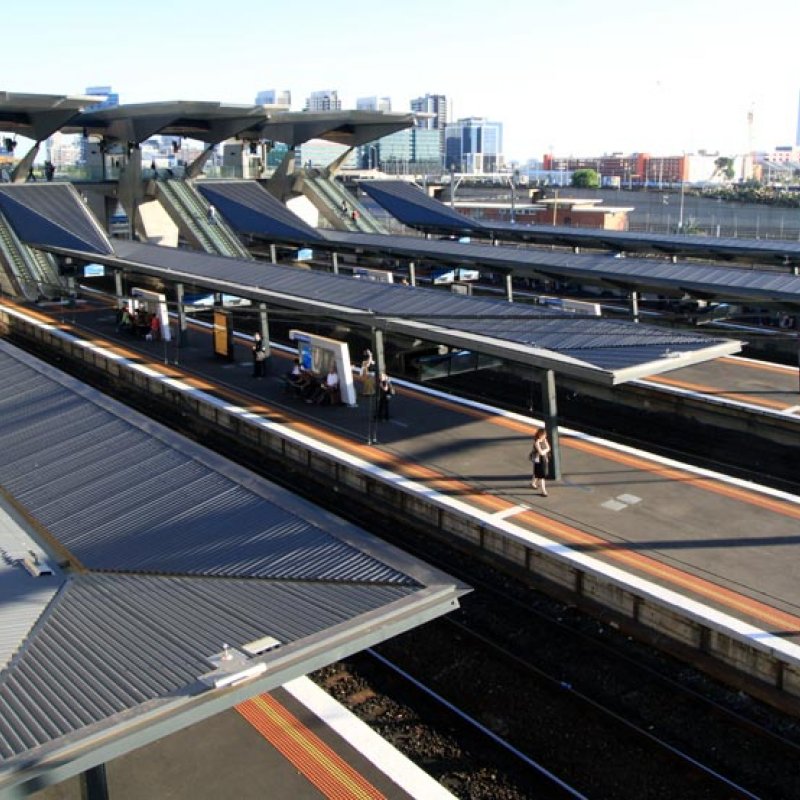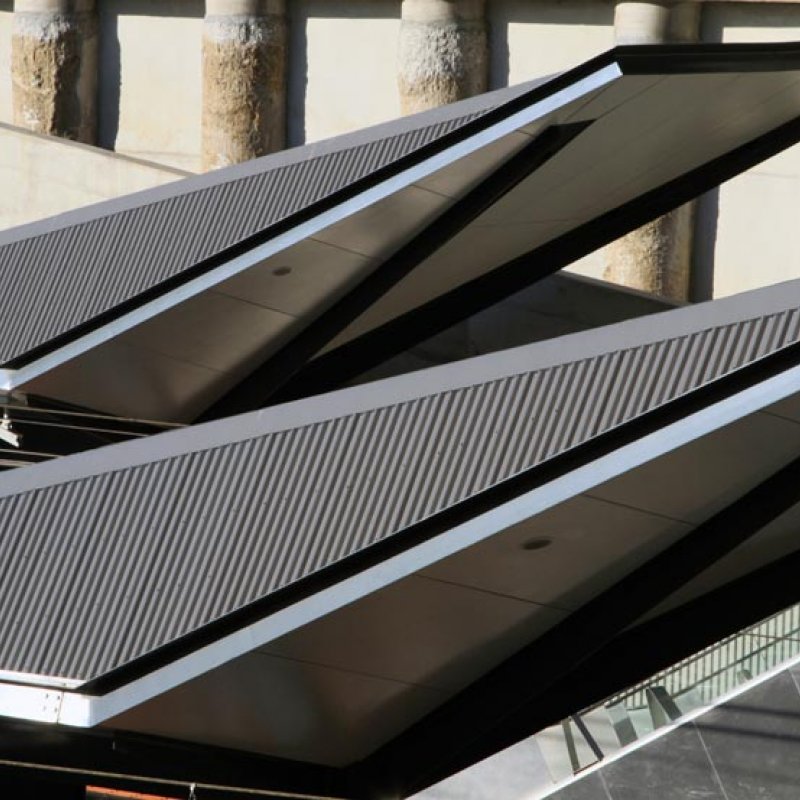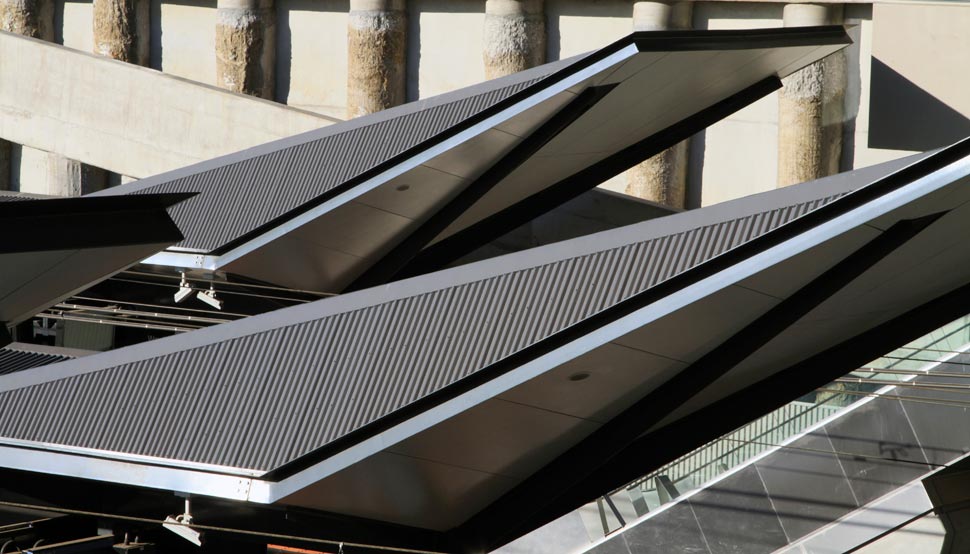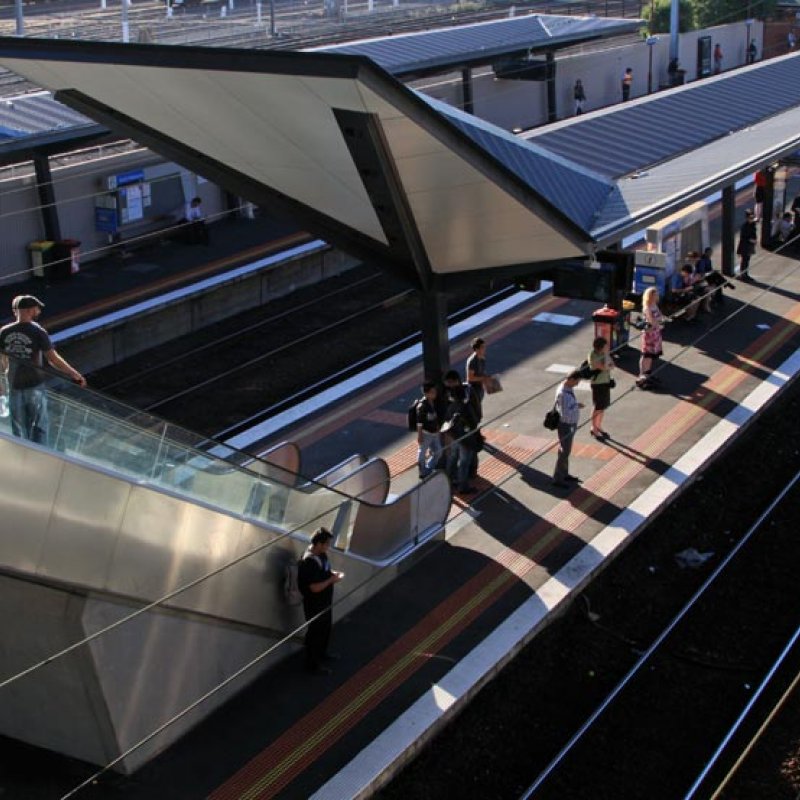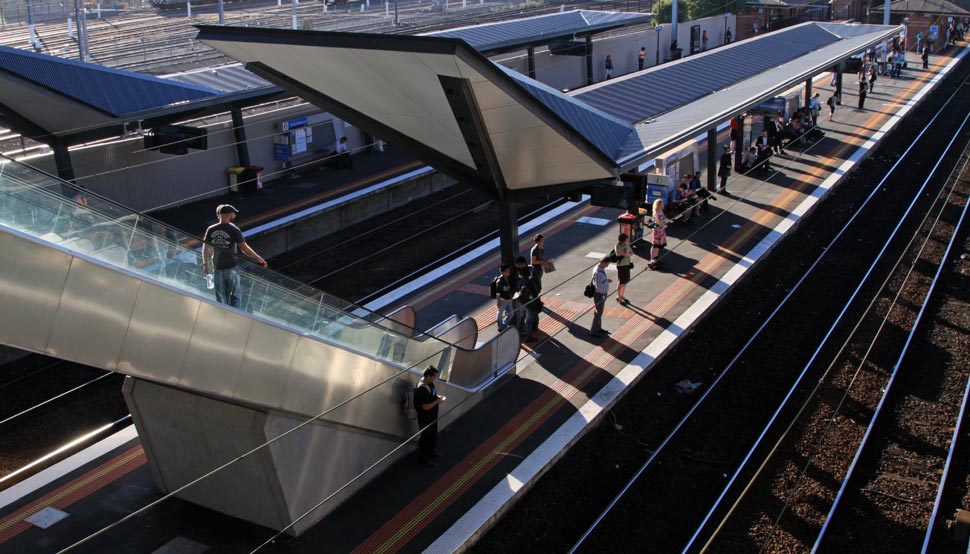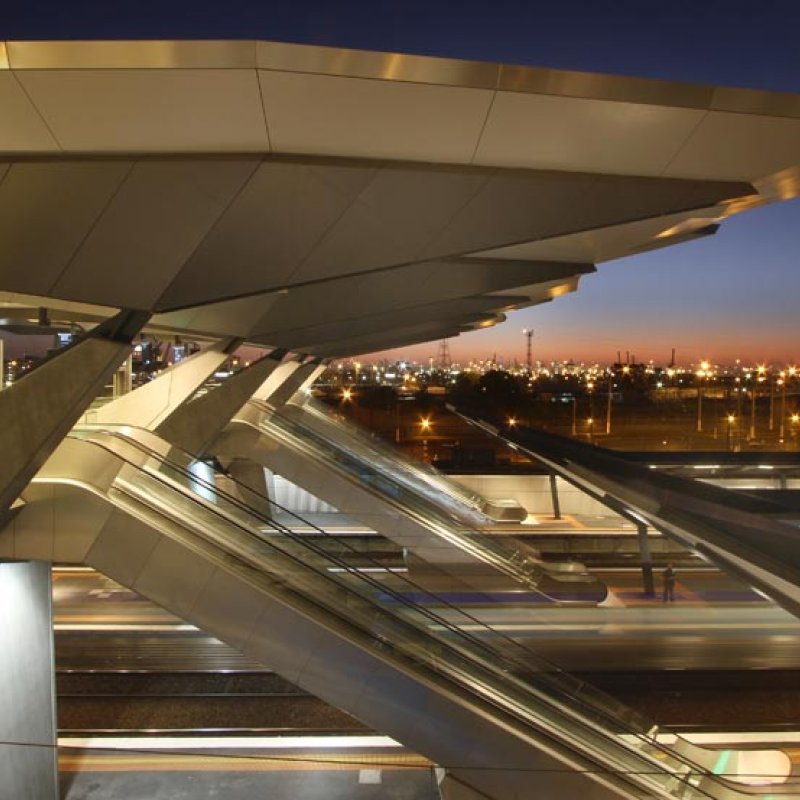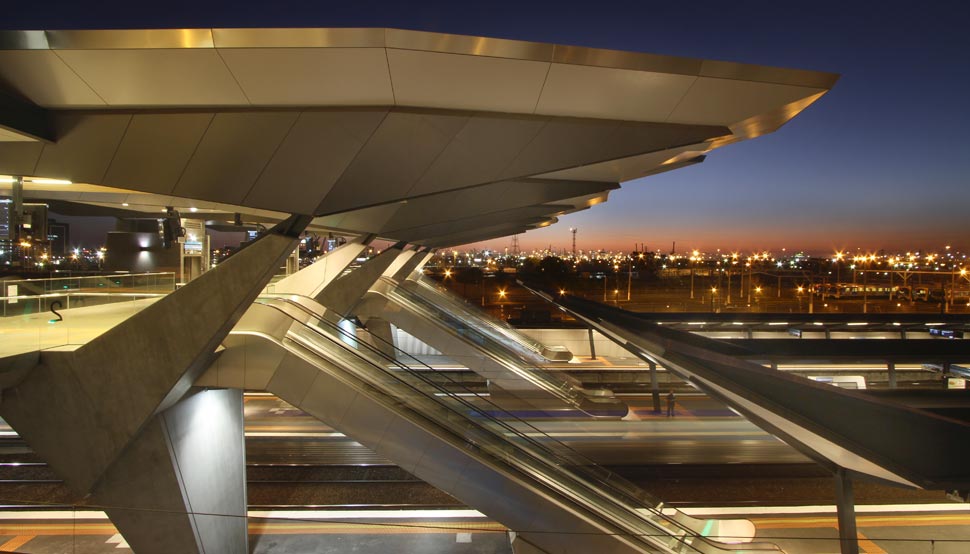Cox Architects’ Melbourne Railway Station – an embodiment of transportation modernity – revealing a lucid interplay of forms to create a memorable new face for Victorian public transport.
Used in this project
- Products
- LYSAGHT KLIP-LOK 700 HI-STRENGTH®
- LYSAGHT SPANDEK®
- Materials
- COLORBOND® steel - Classic finish
- Colours
-
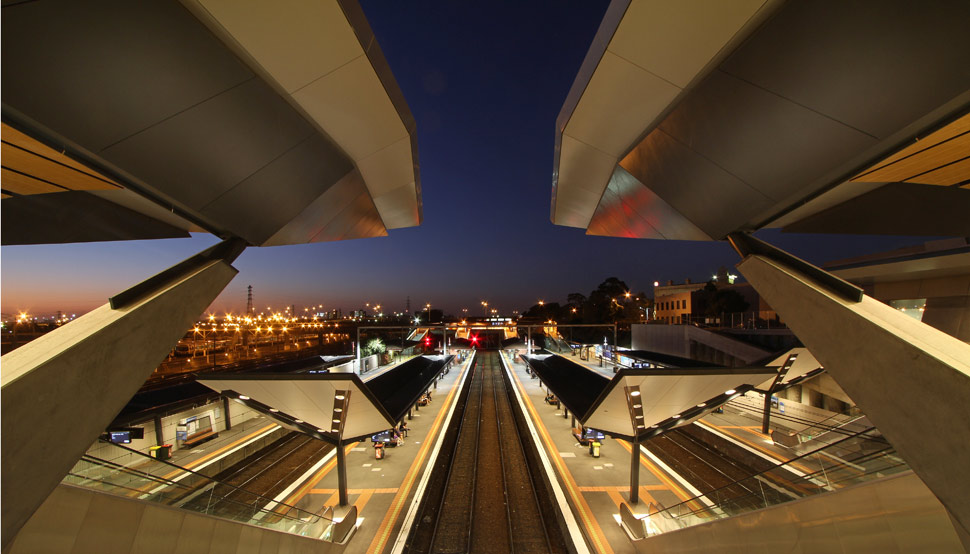
Tucked away on the city's north-western CBD fringe, the station deserves to be the new pin-up for Melbourne's rail operations.
Lightweight, slender steelwork flows across the site as a sequence of platforms for viewing, arrival and departure. Parasol roofs and sharp functionality deliver a signature of scale and fully human spaces.
The revamped station turns the clock back to a time when art and craft produced some of the grandest civic architecture.
Cox Architects' Melbourne principal Patrick Ness said the project presents an opportunity to return prestige to public transport commuters. "Of course you consider the great history of railway stations," he says. "You want to add to that tradition yet remain modern."
The station's reinvigoration includes a new forecourt and entry building, which creates a new street address. It gives way to an elevated public concourse including lifts and escalators, and upgraded platform areas with canopies, passenger seating and weather protection screens. There's also improved and quicker access within a safer and more secure environment.
"For the first time there is this elevated platform that becomes a virtual plateau from which to gain a whole new appreciation of the city," says Ness. The old station had no such thing – just a series of asphalted ramps on a north and south axis in parallel with rail tracks.
One of the key design challenges, Ness said, involved telescoping services and functions onto the existing narrow rail platforms. "The solution was really driven by micro function," he said. "Rail platforms provided a very narrow working corridor and are well below current standard codes. Vertical structure, lifts and escalators were designed very carefully and installed to maximise public space.
"Steel is integral to that and has always informed our work."
A series of slender, tree-like concrete columns rise from the station's southern end at platform level to support the upper-level concourse, risers and canopies. This feathering of form and structure is critical to the achievement of design and operational clarity.
Adam Hannon of Cox said steel provided vital clues for the contemporary interpretation. "The historic link with steel provided a vital reference – the original Victorian-era station canopies remain intact on the northern end. The use of LYSAGHT KLIP-LOK® HS700 and LYSAGHT SPANDEK®, both made from COLORBOND® steel Ironstone® in a Classic finish, express the evolution of materials that have stood the test of time.
"Key expressive elements such as the steel canopies ensure a high level of refinement and authenticity," adds Ness.
"Steel also provided precision and economy. It would have been impossible in any other material because off-site fabrication permitted intact structural elements. All canopies were craned and skated into position while the station remained electrically alive and open as a fully working operation.
"Such projects are created not through idiosyncratic design, but thoughtful process," said Cox project architect Jonathan Gardiner. "It's possible to create something grand without being an edifice. If it's iconic, that's because we work hard on the processes to ensure all critical areas for the client and public are met."



